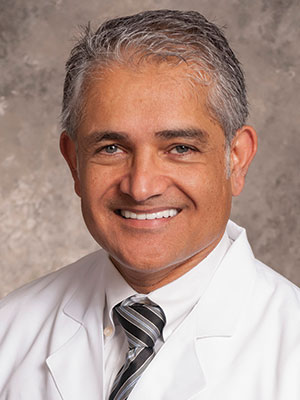Electronic documentation was designed to streamline practices and save clinicians time and money. If the system used in your practice isn’t, then Tuesday’s Business Administration session How to Make the EMR Work for You may be able to provide some practical tips and tricks.
The session will feature three practitioners each discussing the use of Epic, Cerner, and the VA health system CPRS, and sharing their own experiences with making the electronic health system work for their clinic. The session will be held from 11:00 am – 12:00 pm in B213-B214, Building B in the Georgia World Congress Center.
EPIC Efficiency

Eric Newman, MD, Director of Quality and Innovation at the Medicine Institute in Geisinger Health System, will open the session with a discussion of EPIC, one of the longest running EHRs.
“We at Geisinger were EPIC’s second customer and have been working with EPIC for more than 20 years,” Dr. Newman said.
However, Dr. Newman will not be discussing how Geisinger uses EPIC, instead he will focus on how practices can adapt EPIC to make the product more useful and efficient to the end user. He wants attendees to re-think the status quo. His presentation includes a look at ordering, documenting, and communicating.
“For physicians, the most precious thing we have is time. We want to use that time wisely – increasing our efficiency, without sacrificing quality, to give us more face-to-face time during the day and less administrative work at night,” Dr. Newman said.
This could include using the EHR to optimize patient care hand-offs or to eliminate convoluted methods of ordering basic tests for patients.
Dr. Newman has practiced in the era of paper charts, early EHR systems, and the modern era of EHRs. He hopes that attendees can walk away from his presentation with practical tips that are translatable to their local practice.
CPRS Tips & Tricks

Salahuddin Kazi, MD, Vice Chair of Education at UT Southwestern Medical Center, will then discuss one of the oldest EHRs in existence, the VA’s Computerized Patient Record System (CPRS). According to Dr. Kazi, the CPRS is in many ways a very simple and straightforward system to use, but that simplicity can frustrate the end user because it does not allow for a lot of customization.
Dr. Kazi plans to present attendees with some tips and tricks for CPRS that will allow for improved workflow.
For example, CPRS does not provide physicians with a running overview of what has been going on with the patient over time. However, Dr. Kazi has been able to adapt the system to create an effective workaround.
“I will show an example with chronic disease management of a little known trick to help users maintain a highly effective problem list, and how it can help them create a snapshot of the patient over time,” Dr. Kazi said. “This is especially helpful for patients seen in the VA system, because many will see multiple providers over time.”
Dr. Kazi will also discuss how clinicians can work with an IT team to create order sets.
“Ordering within CPRS is quite complex. It is like going to a grocery store and picking things out from different aisles to put together a complex prescription or infusion,” Dr. Kazi said. “By packaging things into appropriate bundles, you can mimic what EPIC does in its smart sets.”
These shortcuts can help to reduce rates of errors and increase functionality.
One other tip Dr. Kazi will discuss is the ability to graphically show a patient’s utilization of medication over time.
“Because the VA is a closed system, you can tell whether a patient took a medication or not, or if there were gaps in medication adherence,” Dr. Kazi said. “For example, with gout, I can track allopurinol usage with a patient’s uric acid level and show them a pattern of medication usage associated with flares.”
The ability to graphically display that information is educational for patients.
Cerner
The final speaker on the session is Winn Chatham, MD, University of Alabama-Birmingham, who will discuss his center’s experience with the Cerner EHR system. Similar to the other presenters, Dr. Chatham will discuss some shortcuts and widgets that can be applied to Cerner.
“Cerner has a lot of capability, but practices will have to have people capable of helping them to customize it,” Dr. Chatham explained. “It is not quite as intrinsically user-friendly as some of the other systems, but it does have a lot of capabilities.”
For example, his center has been able to develop an “autofax” widget for Cerner that accesses a database of providers in the state that can be incorporated into the Copy/To options when signing a note that automatically faxes the information to those providers. They are also working on workflow widgets that will incorporate patient-reported outcomes directly into files.
Fully utilizing Cerner really entails receiving a lot of education on the front-end, Dr. Chatham said.
“We have found that it takes two full days to really understand and optimize workflow,” he said. “Clinicians should be prepared for that before stepping into the clinic.”
